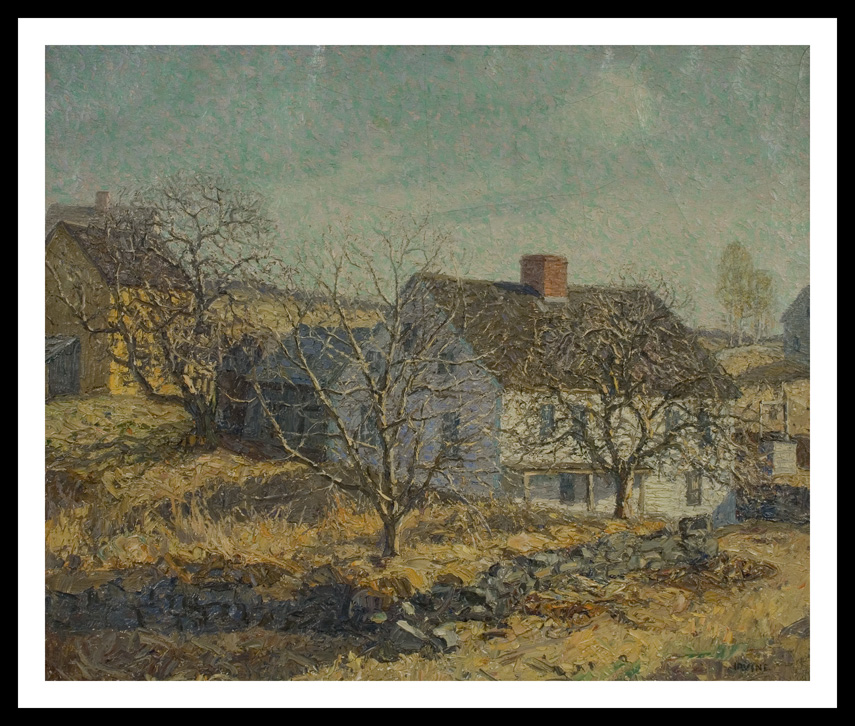
Keywords: Transition, Perspective
Irvine established his reputation in Chicago and began painting in New England as early as 1906. He found in the rural northeast a landscape in which the human presence seemed to coexist in harmony with Nature, a point of view reflected in Irvine’s paintings. In 1918 he relocated to Connecticut, where he was associated with the Old Lyme Art Colony.
Landscape as Home
Early spring in rural New England. This bucolic landscape of pasture and meadowland emerged following deforestation and the construction of simple wood-framed buildings rimmed by stone walls. Other details of human transformation include a well-sweep for hauling water, road for carriages and early autos, central-chimneys for wood-heated houses, and fruit trees leafing out beyond others in the distance.